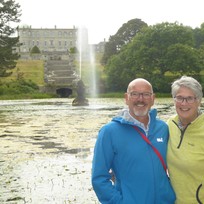( Overview
/ Two Bullocks on a Boat Go West
The first part of our journey today from Union Hall to Bullock Island, Barloge Creek (10.4nm) looked like a rock dodging exercise on the charts.
…until we could smell burning rubber. Once again our fan belt was shredding and covering the engine with a fine black dust. Memories of last year East Passage, Cork, but this time we weren’t near a marina, but on a swelly sea.
Barloge Creek is a beautiful bay with shallow blue green waters. A few other boats were anchored, but we easily found a spot.
… and when we tried to restart the engine it refused. Frantic googling and reading of manuals ensued, but we concluded the engine needed to cool down, so relief all round when it fired up after half an hour.
Beyond The Rapids, is Lough Hyne which is an unusual seawater lake with many rare species of marine life.
As part of a Famine Relief project the Rapids were narrowed and made resistant to erosion. When potato blight struck in 1845, the government did too little, too late, and one million died of starvation and cholera. Introduced by Walter Rayleigh, potatoes had become the main food for the poor.































 Sign in with Apple
Sign in with Apple  Log in with Facebook
Log in with Facebook